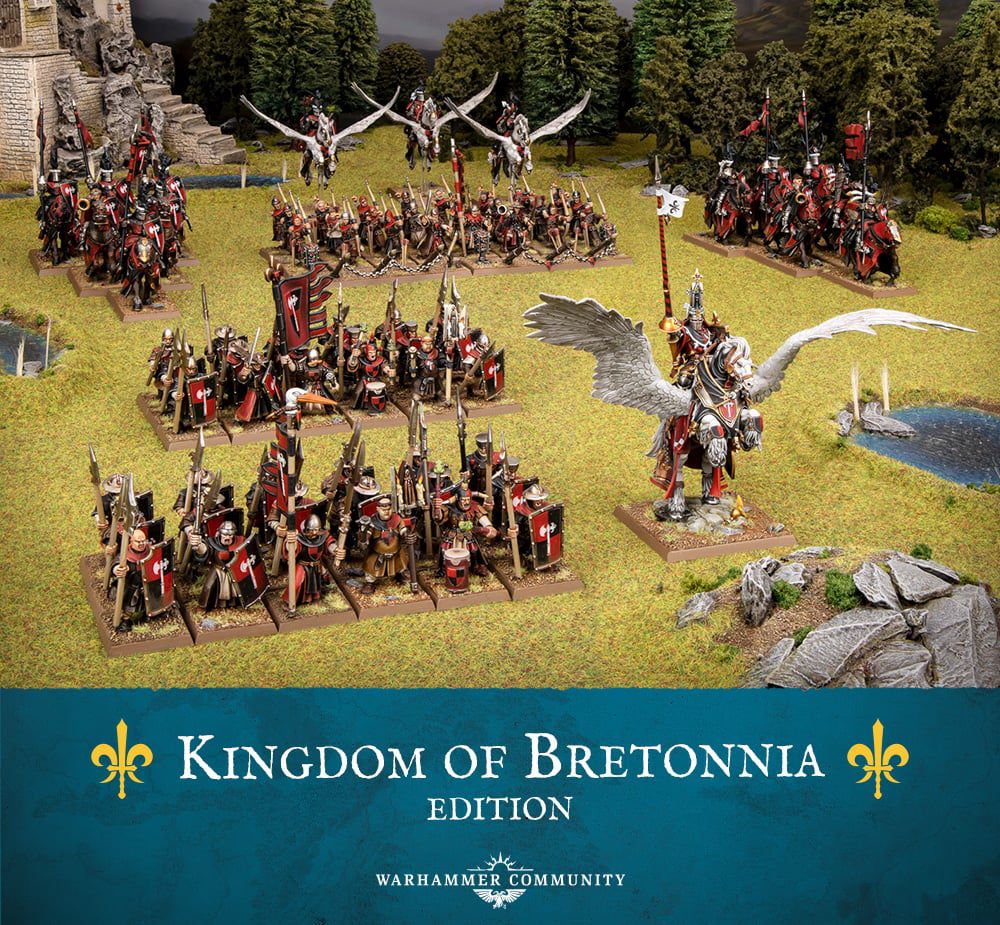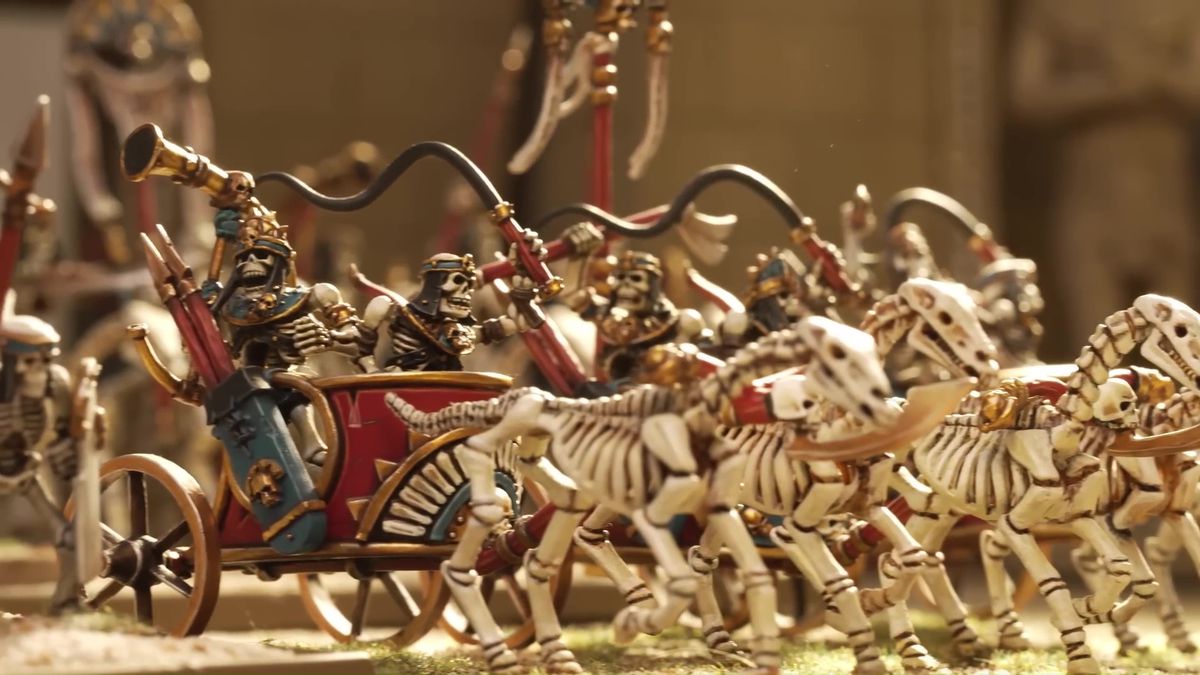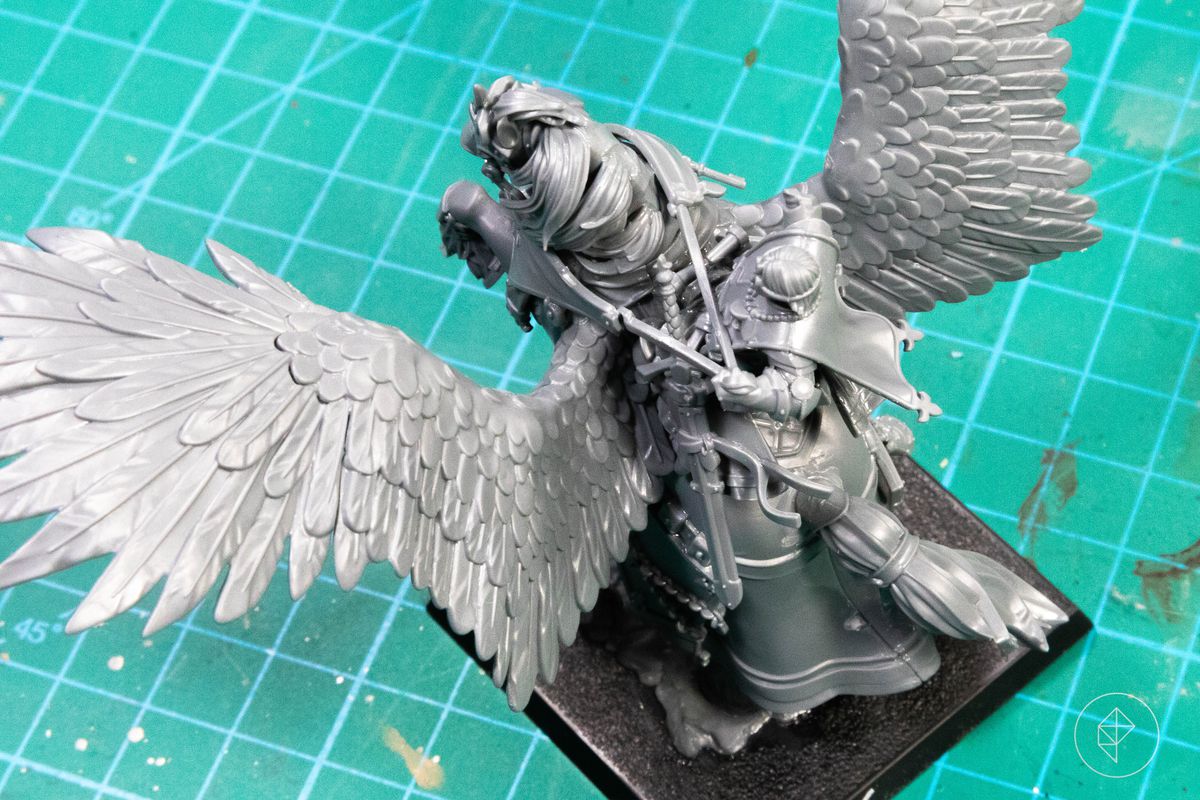Warhammer's original tabletop wargame is back, but it's going to be a challenge for newcomers
I remember when The Old World, long one of Games Workshop's most interesting creations, died in 2015. Inspired by the dashing tin soldiers used to recreate Napoleon-era battles, the sword-and-sorcery setting was home to the British company's flagship. Warhammer fantasy battle game for decades. But that game and nearly a dozen other tabletop products – beloved spin-off titles such as Warhammer quest, Man-o-warand even cult classic Mordheim – was simply no longer relevant after an in-fiction apocalypse called the End Times brought about the Age of Sigmar. Now, almost ten years later, the classic setting is back with a new game called Warhammer: the ancient worldarriving in stores later this month.
Unfortunately, after spending a few weeks with… The Ancient World, I'm a little concerned. The gameplay itself feels eerily familiar – dare I say it, comfortable. But even though it hasn't been released yet, I'm already reeling from what looks like a bloated lineup of miniatures, books, and other accessories hitting stores later this month. It looks like everything is taking off at once – just without a traditional boxed starter set to back it up. It's all shaping up to be a complex and expensive offering, one that will likely appeal to fans with deep pockets who are already invested in the hobby.
Is it a good place for newbies to start? Not so much. Furthermore, this is not a replacement for Games Workshop's current fantasy offering. Instead, it's more of a supplementary game that's broadly similar to, but not the same as, Age of Sigmar. A fantasy version of the Warhammer 40,000 spinoff Warhammer: The Horus Heresyif you will, down to the part where it actually is a precursor. But is there actually room in the landscape for it? another large scale mass battle game? Given the appetite for new Games Workshop products on the market, it might not even matter. Early indications seem to indicate that the game will sell briskly at retail, much like the 10th edition of 40K.
All setup on the table, The Ancient World still looks brilliant. Two starter sets will be offered at launch, each with a large and functional army of 1,200 points. The Bretonns are classic medieval knights and infantry, decorated with heraldry and touching on English and French mythology. The Tomb Kings of Khemri are a large mass of skeletal warriors with an Egyptian vibe. Their undead cohort fights alongside swarms of scarabs and wields ancient magic.

The Breton starting force consists of 76 miniatures, divided into six units, including a large pegasus, a completely new image. The Tomb Kings' army is larger because their units tend to be cheaper in points value. Their war chest contains 93 figures and is crowned by a huge Necrolith Bone Dragon, ridden by a Liche Priest.
Players take turns activating their entire army in a traditional “I go, you go” system. The game is broken up into major phases and it is a very deliberate exercise that is less dynamic but more strategic than modern skirmish designs. Deploying such large blocs of troops can feel impractical, but there's a lot of satisfaction in pinning down an enemy unit and then executing a massive flank with your cavalry. This grand maneuvering strikes in a unique way and conveys a greater scope reminiscent of historical battles.
What's especially interesting is that much of the game's rules structure remains unchanged from the previous edition. In fact, very little stands out as an obvious tweak outside of the major change in the way magic works.

Image: Gamesworkshop via YouTube
In Warhammer fantasy battlemagicians and shamans developed their potential in the magical phase. This was a big part of the game (unless you played non-magical dwarves, like I did), as you had to unleash different spells and change the battlefield significantly. This time the magic phase is over. Instead, there's a more fluid and integrated approach, with spellcasters activated in the shooting phase to launch ranged attack spells, or in the movement phase to alter mobility. This felt very strange in my first few plays, almost as if magic users were seeing a smaller role with less emphasis. That was largely an illusion, because they are still an integral part of it The Ancient World, they just require a change of perspective. It feels more natural and a more cohesive gameplay element, which is probably the reason for the change. Luckily, all the weirdness of magic is still intact, with miscasts and very quirky spells.
Less overt is some of the cleanup work that has taken place. For example, formations are now listed for each unit in the special rules. Special rules tend to be a little more standardized and less unique across the system. Breaking and morale have been reworked to include more detailed outcomes such as falling back, where only a totally blown roll will result in large groups of soldiers trying to flee the battle in panic. This leads to interesting results in battle and is a smart change.
Everything else is largely as expected. Formations, victim removal, templates, it's all there. Even the Ballistic Skill stat used for ranged units remains a static number, unlike the newer method of displaying the die result required in other Games Workshop systems. Strength and toughness are still compared and armor saves still function as they did in the past. You're still rolling buckets of dice and picking infantry from the rear ranks as the wounds are tallied.

While the system retains the charm of its predecessor, the release model more closely reflects Games Workshop's modern approach. In addition to splitting the traditional two-army starter box into separate products – a move that makes it much harder to introduce the game to friends and build an informal community – there's a surprisingly large number of initial products that will be difficult to sort through . There are optional and costly supplements such as spell cards, unit reference cards and movement drawers, but there are also books dedicated to both starting factions with additional lore and unit rules. If you decide to play an army that is not supported by the starter boxes, you will need to use the Powers of imagination or Tearing Hordes softcover army booklets, which contain accumulated points and special rules for the forces of good and evil respectively. You will also likely need to purchase the rulebook, templates, and a more detailed hardcover codex book when it is released for the army of your choice in the future. It probably won't be long before we also have a magic supplement and other purchases that are not mandatory, but strongly encouraged. It appears to be a book-driven system, one that will be expensive in the long run because the rules are spread across dozens of products. Since The Ancient World has adjusted the size of the base on which miniatures sit, it is difficult to reuse old models without converting them. This means that many players will be starting over, and onboarding new players at the low end will likely cost hundreds of dollars.
I'm excited Warhammer: the ancient world. The game definitely brought back vivid memories of my childhood and stirred up emotions that were waiting to be dispelled. My experience with the game so far has been very entertaining and rewarding Warhammer fantasy battle. Despite this, I have major concerns about how the product line and game style will relegate this new release to a more niche role, similar to Games Workshop's specialist products of the past. This doesn't feel like a flagship line positioned in the same role as before. Instead, it comes across as a limited offering meant to quell the buzz that has existed since 2015, when the Old World died.
Like most people, I'm wondering when I'll have the time and where I'll get the money to scrape together large armies, and that's ultimately the big cloud hanging over this release. Without the ability to acquire an old power second-hand (without completely re-basing the entire lot), or keep a second starter power to lend, I'm skeptical that there's a suitably inviting path to introducing the game to the curious. I know I can wander down to the local store and find an opponent with several War tear warbands. I don't know if I'll even be able to find a second soul to throw down a big mass combat game, even if we have to settle for hundreds of dollars worth of unpainted gray troops on each side of the table.
Warhammer: The Ancient World has been assessed using retail products from Games Workshop. Vox Media has affiliate partnerships, but not with Games Workshop. These do not influence editorial content, although Vox Media may earn commissions on products purchased through affiliate links. You can find Additional information about Polygon's ethics policy can be found here.
